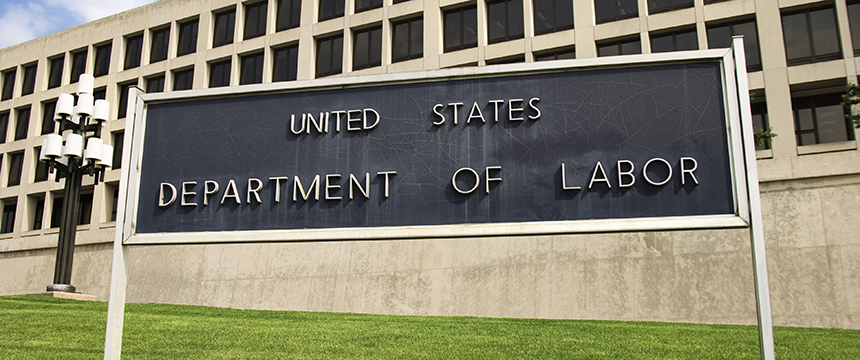Two Recent Health and Welfare Cases Provide Important ERISA Reminders

We usually focus most on significant ERISA court decisions, particularly those from the Supreme Court, that clarify important open legal issues under ERISA. However, some ERISA court decisions simply serve as important reminders to help us avoid problems in the future. In this article, we discuss two such recent cases.
Walsh v. Board of Trustees of Local 272 Welfare Fund and Local 272 Welfare Fund, 22-cv-592 (S.D.N.Y August 2, 2022)
This case involves a suit filed by the U.S. Department of Labor (DOL) against a Taft-Harley welfare plan and its trustees alleging violations of certain amendments that the Affordable Care Act (ACA) made to ERISA.
Pre-ACA, the Local 272 plan reimbursed 90% of covered benefit costs, but only up to a $125,000 maximum annual plan benefit, and also imposed a fixed dollar copay on prescription drugs (and certain other specified medical services), but only up to a maximum annual benefit of $5,000. There was no cap on the amount of a participant’s out-of-pocket cost share over the applicable maximum benefit amounts. In other words, participants were responsible for 100% of the costs of most medical expenses they incurred over $125,000 (or over $5,000 for prescription drugs and certain other medical services).
The ACA imposed hard cost share caps on essential health benefits and prohibited dollar limits on specific benefits on plans that were not “grandfathered”. Plans that were grandfathered under the ACA were not allowed to cap plan coverage for essential health services. Moreover, they lost grandfather status if they increased the cost share percentage in effect under the pre-ACA plan.
The Local 272 plan, which was grandfathered initially, applied for and obtained annual waivers (available under DOL regulations) of the ACA requirements through November 30, 2014. However, such waivers ceased to be available and the plan was required to fully comply with all ACA requirements applicable to grandfathered plans as of December 1, 2014.
Faced with having finally to comply with the ACA, the trustees met in September 2014 to discuss how to proceed. They ultimately adopted an amendment to the plan that eliminated the $125,000 cap on benefits (as required by the ACA for essential benefits under grandfathered plans), but at the same time increased the member’s copayment obligation percentage from 10% to 90% for claims in excess of $125,000 (or of $5,000 for prescription drug claims). This second change caused the plan to lose grandfathered status and become subject to the normal ACA requirements.
As noted in the DOL’s complaint, the board minutes from the meeting when the amendment was adopted show that the board approved these amendments even though the board had been advised about the potential penalties and other risks if the DOL were to audit the plan following the amendment.
Shortly thereafter, the trustees notified the participants of the amendment and its elimination of the $125,000 cap on benefits, as well as the increase in the copay obligation from 10% to 90% of covered charges without a cap on participant liability.
Roughly eight years later, on June 23, 2022, the DOL filed suit against the plan and its trustees. The key allegations included in the complaint were that (i) the plan lost its grandfathered status in 2014 when the trustees increased the copay obligation from 10% to 90%, (ii) the plan failed to comply with the requirements of ERISA (as modified by the ACA) that preclude cost sharing for essential health benefits whether or not the plan was grandfathered, (iii) the plan violated ERISA Section 715 by not capping participant cost share for preventative health services after it lost grandfathered status as required by ERISA Section 715, and (iv) the trustees violated their ERISA fiduciary duties of loyalty, prudence, and to follow plan terms making them jointly and severally liable for any relief the participants were entitled to under Section 409(a) of ERISA, including making the plan whole and disgorging profits realized as a result of the breach, as well as any other equitable remedies approved by the court.
On August 2, 2022, roughly one week later, the District Court entered a Consent Judgement that had been negotiated by the plan and the DOL through their counsel following “extensive negotiations and discussions”. The Consent Judgement was signed by the plan, a person signing on behalf of the trustees (but not the trustees themselves), and the DOL. Under the Consent Judgement the plan agree to:
- amend the plan effective no later than December 1. 2022 to eliminate all 90% cost sharing provisions in the plan;
- not amend the plan to add a trigger amount that would impose a higher participant cost-share on in-network claims than allowed under the ACA absent a change in federal law that allowed such a cap and then only after providing a minimum 120 days prior notice to the DOL;
- send an agreed form of letter to all participants who had since 2019 submitted claims in excess of the $125,000/$5,000 limitations and to take certain steps to insure such letters are received by all participants;
- reprocess claims submitted by participants in response to such letter, reimburse the improper copayments made by such participants, and use reasonable efforts to resolve outstanding third party billing or collection actions against such participants relating to the improper 90% copay obligation imposed on participants;
- notify participants of the ability of the plan to provided evidence to consumer reporting agencies to address adverse information in the participant’s credit report related to the improper imposition of the copayment obligation on participants, including a copy of the Consent Judgement; and
- provide the DOL with a report every six months over the following two years with information about all participants who sought relief under the settlement and a short statement about why each such request was granted, denied in part, denied in full or still pending and cooperate with the DOL’s requests for further information regarding requests for retroactive relief.
Interestingly, the Consent Judgement does not impose any personal liability on the trustees, require that any trustee be removed from office, or impose any remedy for the plan’s violations between 2014 and 2019, even though the trustees were advised that the 2014 amendments would not comply with the ACA. There is no discussion in the Consent Judgement as to why the remedies did not extend back to earlier years as well.
The relief ordered in the Consent Judgement did closely track the relief sought by the DOL in its complaint and both were clearly focused on making the affected participants whole, at least from 2019 forward. In light of how soon the Consent Judgment followed the filing of the complaint and its detailed nature, it appears likely that the terms set forth in the Consent Judgment were negotiated over a significant period prior to the filing of the complaint and that the filing of the complaint was intended to provide notice to a broader audience.
The good news is that the DOL actually found this clear violation of ERISA and obtained significant relief for the plan’s participants. We also do not know whether any of the trustees were forced to resign as part of the settlement and agree not to serve in the future in a fiduciary capacity, as the DOL sometime requests. As noted above, the individual trustees were not required to sign the Consent Judgement and their names were not listed in the Consent Judgement or the DOL’s complaint.
The reminders here to plan sponsors and administrators are: (i) the DOL does audit many plans of many sizes, and (ii) blatantly ignoring the requirements of ERISA when administering or amending an ERISA plan or the advice of your counsel and other advisors on the hope that you will not be audited is not prudent or smart.
Harris v. The Lincoln National Life Insurance Company, 21-cv-13186 (11th Cir. July 29, 2022)
The Supreme Court accepts many ERISA cases to resolve an existing conflict between how the Courts of Appeal in two circuits interpret some ERISA requirement. However, it is up to the Supreme Court to decide whether or not to address such a conflict, and the Court may elect not to take a case even if a conflict exists for many reasons.
A recent decision by the Eleventh Circuit Court of Appeals illustrates a situation where currently there is not just a simple conflict between two Circuits, but rather a situation where the Courts of Appeal are of at least three different minds on an important ERISA issue (and arguably even more).
The issue in Harris was fairly straight forward–when the proper standard of review of a benefit determination is de novo, rather than arbitrary and capricious, may the court, when reviewing the administrator’s benefit determination, consider evidence outside of the administrative record created during the internal review process?
The plaintiff in Harris had submitted a claim for long-term disability benefits, which was denied by the claims administer. At trial, both sides agreed that the claims administrator had not been granted broad discretion to decide benefit claims and interpret the plan’s terms, but there was no discussion of why that was the case.1 Accordingly, the court’s denial of the claim was subject to de novo review by the district court.
Mr. Harris sought to submit to the district court additional medical records not considered by the claims administrator, along with an affidavit from his doctor. The district court denied his motion to submit the additional evidence and upheld the claims administrator’s benefit determination based on the administrative record, holding that such evidence was not admissible. Mr. Harris then filed a timely appeal.
On appeal, the Eleventh Circuit found that the district court’s refusal to consider the additional evidence was contrary to its prior precedent and reversed and remanded the case to the district court.
The Eleventh Circuit started its analysis with the Supreme Court’s holding in Firestone Tire and Rubber Company v. Bruch, 489 U.S. 101 (1989), which had held that benefit denials of ERISA claims were to be reviewed subject to de novo review by the courts unless the plan itself gives the claims administrator discretionary authority to decide the claim and interpret the provisions of the plan.
As no such discretion had been granted in this case, the Eleventh Circuit described the issue before it as whether under the de novo standard of review “forbids, requires or merely allows” the court to consider evidence outside of the administrative record. The Court then reviewed the current law in the various Courts of Appeal and found that there were (at least) three distinct views on the issue.
For example, according to the Eleventh Circuit, in the Fifth and Sixth Circuits there was no difference as to when additional evidence may be considered under either standard of review. Rather, review was limited to the administrative record both when the review was arbitrary and capricious or de novo.
On the other hand, the Court noted that a number of Circuits had found that the lower court could review evidence outside the administrative record when review was de novo. These include the Fourth Circuit (“where necessary for resolution of the claim”), the Seventh Circuit (“freely allow relevant extra evidence and appropriate discovery”), the Eighth Circuit (with “good cause”), the Ninth Circuit (where “necessary to conduct an adequate de novo review”), and the Tenth Circuit (“in limited circumstances”). In these Circuits, while review is normally limited to the administrative record, the reviewing court is allowed to admit additional evidence where “appropriate”. Interestingly, as is clear based on the Eleventh Circuit’s analysis, when admitting additional evidence is considered “appropriate”, would seem to vary significantly among these Circuits. In short, the answer in these Circuits is very circuit-specific.
Finally, on the other end of the spectrum, are the Third Circuit (which has held that limiting review when the review is de novo “makes little sense”) and the District of Columbia Circuit (“de novo means a fresh, independent determination of the matter”). As the Court in Harris made clear, the Eleventh Circuit had previously adopted an equally broad interpretation of when additional evidence may be considered in multiple prior decisions. In doing so, the Court quoted Judge Easterbrook of the Seventh Circuit Court of Appeals: ‘“de novo review’ is a misleading phrase” as what “Firestone requires is not ‘review’ of any kind, it is an independent ‘decision’ that Firestone contemplates.” Krolnik v, Prudential Ins. Co. of Am., 570 F.3d 841,843 (7th Cir. 2009).2 Finally, the Court noted that the cases relied on by the district court in support of its ruling, involved arbitrary and capricious, not de novo, review and, thus, were not relevant authority that the district court could rely on to support its ruling.
The reminder here is that the law in this area is very much unsettled. On one extreme, a court can be expected never to allow extrinsic evidence without regard to the standard of review. On the other extreme, a court will allow extrinsic evidence in many cases where review is de novo. In the middle, most courts will at least consider allowing extrinsic evidence where review is de novo, but with variable standards for doing so. The key is that the risk of extrinsic evidence being allowed varies almost from circuit to circuit, and maybe court to court.
The second reminder is that while a de novo review standard continues to be fairly rare in ERISA benefit cases, there is a range of reasons why this may be the appropriate standard, including poor drafting, significant claims regulation violations, or the situs of the case. A key may be whether the DOL becomes more aggressive in taking away discretionary review based on DOL claims regulation violations. For now, however, the law of the land on this issue varies significantly depending on where the litigation is located and it is not a good idea to assume that extrinsic evidence will not be admitted in your case.
1 While under most plans the claims administrator is granted such discretion that is not always the case. Moreover, courts periodically find that the actual language used to grant discretion is insufficient under Firestone to shift the standard of review away from de novo. Moreover, under the DOL’s claims regulations, a claim’s administrator’s non-compliance with the regulations, can result in the standard of review being shifted back to de novo. See, e.g., 29 CFR §2560.503.1(l)(2)(i).
2 The Court also noted that the cases cited by the district court each involved an arbitrary and capricious review standard, not de novo.
 |
As part of Foley’s ongoing commitment to provide legal insight to our clients and colleagues, our Employee Benefits and Executive Compensation Group has a monthly newsletter we call “Employee Benefits Insights,” where we provide you with updates on the most recent and pressing matters concerning employee benefits and other related topics. Click here or click the button to the left to subscribe. |
